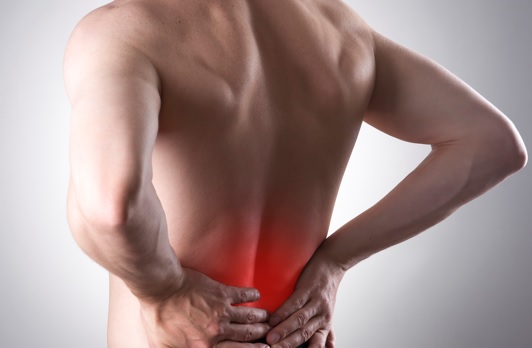
Pick up the vacuum cleaner and dig out the paintbrush. Regular housework and DIY is now the best way to avoid a bad back, according to scientists.
A new study suggests that debilitating spinal problems can be prevented without leaving the home, simply by reaching the nooks and crannies others less house-proud wouldn’t bother with.
Researchers from Sydney University in Australia examined the health and lifestyle data of 60,000 Scottish and English adults.
They found that doing regular light manual work, such as decorating or gardening, slashed the odds of having back pain by a quarter.
Meanwhile, medium to high levels of housework lowered the risk by nearly 20%.
There has been conflicting advice from scientists on whether exercise can cause or alleviate back pain.
But the latest study, published in the Journal of Sport and Health Science, aimed to cut through the confusion.
The team put under the microscope huge amounts of data from official Scottish and English national Healthy Surveys conducted between 1994 and 2008, which interviewed cross-sections of the population.
Then they tried to find links between lifestyles and long-term complaints, including lower back pain, slipped discs and spinal damage.
The more physical activity people did, the less likely they were to have back problems.
But as the team dug deeper, they found that some forms of exercise were better than others.
Doing 90 minutes of gardening or DIY a week cut the odds of back problems by 24% – but more than three-and-a-half hours raised the risk by 16%. However, taking on extra housework was beneficial with anything more than an hour a week slashing the danger of a chronic complaint by 18%.
Playing contact sports like football and rugby was associated with 40% fewer back conditions while it was 44% for going for a regular run.
Walking, too, was linked to greater flexibility with the chances of having problems falling with every extra hour per week.
Lead author, professor Emmanuel Stamatakis, said that the findings should provide a better idea of what to do to stay free of debilitating problems.
He added: “Even though clinical guidelines recommend that people with back pain should stay active, the nature of the activity is rarely described and may not necessarily always be a prescription to be physically active.” Treating back pain costs the NHS millions of pounds each year. The latest statistics available show that between 2008 and 2013 in Scotland, the annual number of GP consultations for it rose 16% from 534,000 to 621,000.
And around 80% of the population will suffer from lower back pain during their lifetime.
Edinburgh-based osteopath Gavin Routledge, who has written two books on the subject, said: “Movement is so important to keep a back strong but variety is the spice of life. An Olympic swimmer will get lots of physical activity but may end up damage to his shoulders.
“On the other hand, an office worker who sits on a bus, in their chair at work and then in front of the television at night can be putting repetitive load on certain muscles. Both lifestyles are bad.
“In between is the right balance, the sweet spot.”

Enjoy the convenience of having The Sunday Post delivered as a digital ePaper straight to your smartphone, tablet or computer.
Subscribe for only £5.49 a month and enjoy all the benefits of the printed paper as a digital replica.
Subscribe